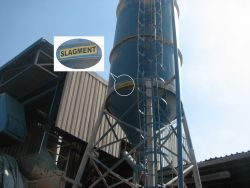- Paving
- Electrical Engineering and Telecoms Infrastructure
- Civil Engineering, Mining, Railway, Building and Plumbing Products
- Curbs / Kerbs
- Landscaping, Streetscaping, Gardening products
- Moulds
- Pizza Oven Kit
- Avalon range
- Builders' and Plumbers' Products
- Benches and Seats
- Concrete Tables
- Grass Blocks
- Litter/Refuse Bins
- Pots and planters (Discontinued)
- Tree rings
- Bollards and Barriers
- Stone Cellar Blocks
- Water features (Discontinued)
Environment Friendly Practices
Important message from the Cement & Concrete Institute of South Africa:
| Concrete: It's Greener than you Think |
| Concrete absorbs CO2 |
Vanstone Precast uses materials and practices methods that comply with the "Green Star 05" specification for concrete design, mixing and casting. These practices make good economic sense and are:
Cement Content
The production of Ordinary Portland Cement, or OPC, is an energy intensive process that uses naturally mined raw materials. The two main ingredients are limestone, CaCO3, and silica, SiO2, which are kiln heated to temperatures of up to 1450°C. The most important chemical reaction is CaCO3 > CaO + CO2, where CaO (calcium oxide) is the most common ingredient of cement. CO2 gas is released into the atmosphere.
 |
 |
| Slagment Silo | OPC Silo |
The hardening of cement is not a drying-out process but a true chemical reaction: The calcium and silica in the dry cement combines with the hydrogen in water to form calcium-silicate-hydrate. This compound forms very fine needles and plates, and contributes most of the strength to hardened cement.
Concrete is a matrix of stones and sand (coarse and fine aggregates) binded together with glue (cement paste). OPC is the most expensive component in simple concrete but it is indispensible since it provides strength to the aggregate-cement-matrix. When designing or choosing concrete mix proportions, it makes sense to keep the OPC as low as possible for the strength required.
For economic as well and environmental reasons, we at Vanstone achieve lower OPC content by:
- the use, wherever possible, of ground granulated blastfurnace slag (Slagment) to replace up to 50% of OPC. Just like Fly Ash, Slagment is a waste product. It is ground and graded dry slag from the iron producing blastfurnace process;
- carefully controlling water content: the more water, the more cement required;
- carefully controlling batching and mixing so that critical mixes are proportioned and mixed accurately;
- daily strength testing to ensure that critical minimum strengths are obtained.
Recycling of Aggregate
All reject concrete that is produced in the factory is crushed and recycled as aggregate in new castings. The percentage of rejects is typically in the order of 5% of mixed concrete. This does not sound like much but it can amount to 400 tonnes or 170 m3 of solid waste that has to be disposed of every month. This is the equivalent of 5 average domestic swimming pools filled with rubble.
